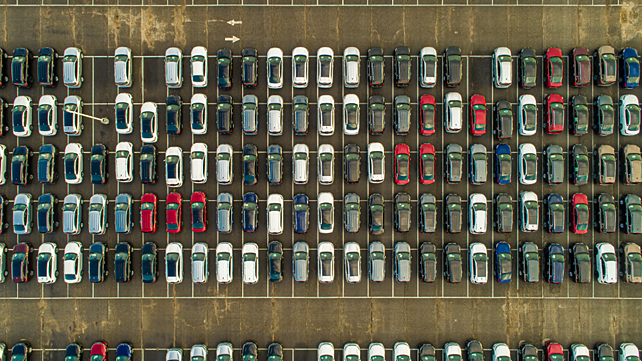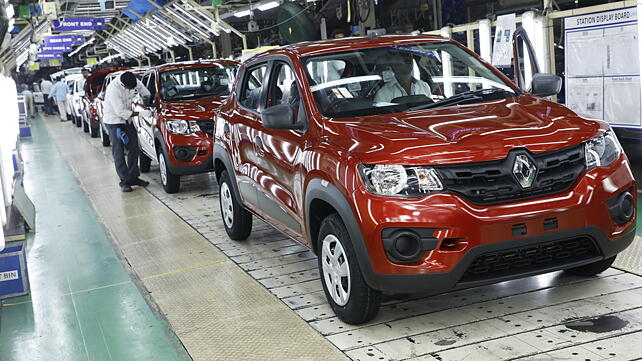
The Indian economy has often been compared to an elephant – slow to get started but once it does, it becomes virtually unstoppable. In the decade leading up to the COVID-19 crisis of 2020, the Indian economy was on overdrive, ranking among the fastest-growing major economies globally, with a growth rate hovering around the 7% mark. So what will the decade of 2020-2030 bring and, more importantly, how will the Indian automotive industry evolve in terms of trends, challenges, and opportunities?
Policy Support Critical for Sustained Growth
Frost & Sullivan’s baseline scenario forecasts a full global GDP recovery by Q1 CY22, pushed by aggressive vaccination programmes and herd immunity. Discounting likely curveballs, India is also on track to post economic recovery by Q3 or Q4 CY21.
Participants at a recent webinar organized by Frost & Sullivan on ‘India in 2025: Key Industries and Investment Growth Opportunities’, pegged India’s nominal GDP to expand to about $3.5-4 trillion in 2025, up from around $2.6 trillion in 2020. Meanwhile, Frost & Sullivan’s research indicates that growth in a post-COVID scenario would range from 6% in a baseline scenario to 8% in a more optimistic scenario within the same time frame.

Multiple variables notwithstanding, if India were able to ratchet up its growth rates to above 7%, it would catapult the country to become the third-largest economy globally by the end of 2030. The caveat here is that sustained structural reforms will be critical. This will mean that the current focus on disinvestment, public-private partnerships (PPPs) for infrastructure growth, production-linked incentives as well as duty structure reforms need to be strengthened.
Simultaneously, internal reforms aimed at improving ease of doing business and reducing compliance burdens will need to be promoted. Such reforms have never been easy in a country as large and complex as India and might continue to present a challenge in the coming years.
As a more long-term strategy, India will need to transition from merely a consumption-based economy to a manufacturing-driven one. This will be a key differentiator that will provide the country with greater economic resilience from future shocks, as was the case with China.
Policy support for domestic manufacturing and services will create a virtuous cycle: it will provide a fillip to consumption spending, with locally manufactured goods and services effectively scaling up to meet expanding local demand.
Optimistic Signs Abound in India’s Key Automotive Markets
The Indian automotive industry is one of the key engines of the economy. Volumes of two-wheeler and three-wheeler sales were set back by two to three years following the COVID-19 crisis, with recovery expected from FY22 onwards. The market is set to recover to pre-pandemic FY19 levels by FY24. The immediate signs – a good monsoon in 2020 – are propitious, reinforced by positive consumer sentiment. For the three-wheeler market, last mile connectivity and e-commerce are additional catalysts boosting the prospects of a quick recovery.

New business models will be the key drivers of growth in the passenger vehicle market. Dealers, OEMs, and suppliers are optimistic about market recovery by the last quarter of FY21. Government incentives for domestic manufacturing and infrastructure growth are, in the meantime, propelling the recovery of the commercial vehicles market.
Connectivity, Autonomous, Shared (and Services), and Electric (CASE) convergence will present a flood of new opportunities for the Indian automotive industry, allowing stakeholders to reinvent their core products, while introducing new service models.
Some of the major growth areas that are likely to emerge include new mobility and ownership models like subscription services and leasing. For instance, the used or pre-owned vehicles market, which is currently about 1.6 times the size of its new vehicle counterpart, will grow to be 2.5 times larger by 2025, buoyed by the entry of OEMs offering certification schemes and warranty schemes.

At Frost & Sullivan, we are very bullish about the future of the electric vehicles (EVs) market in India. Their penetration into shared and personal mobility modes is set to underline the estimated five million EVs (including two-wheelers, three-wheelers, and buses) that are likely to be in use by 2025. More importantly, not only will this transformation be reflected in increased consumer adoption levels but also in terms of the accelerated development of the entire electric mobility ecosystem, including charging infrastructure and battery manufacturing.
Today, every automotive OEM in India is launching a connected vehicle model. Going forward, this will mean an explosion of service-based revenues, sparked by a range of services – telematics, track and trace, and location-based services, to name a few – that will be major revenue spinners. The focus will shift from product sales to services-based revenues. OEMs could be looking at almost five million connected cars from which to extract service revenues by 2025.

While conventional wisdom seems to indicate that India is unlikely to be an autonomous vehicle (AV) market (at least for Level 4 and Level 5) over the next 10 years, Level 1, 2, and even 2.5 are a distinct possibility. Such levels of vehicle autonomy imply a significant level of driver intervention and their involvement with accompanying advanced driver assistance technologies like lane departure assist, emergency braking, and collision avoidance systems. Such trends will push technology adoption in a market that, we believe, will have 20% penetration of Level 2 by 2030.
Final Word
On the one hand, progressive policies like FAME I, FAME II, and the recent vehicle scrappage policy will create a transformative push for the Indian automotive industry. This will be reinforced by the impetus provided to domestic manufacturing through schemes like Atmanirbhar Bharat and Made in India.
Industry transformation will also come from evolving customer trends. Not only are customers more willing to consider new vehicle purchases, but they are also showing a greater openness to new business opportunities like subscription services and short-term rentals. Many are now also looking at vehicle sales on digital networks and online channels, with investments in this space set to surge.
A major change will centre on customers looking beyond just a product-based experience to an all-encompassing brand-based one. Accordingly, the next decade will see the take-off of the “phygital”, i.e., the physical + digital concept in India. Accompanying this will be the other big transformation: the shift from traditional models of vehicle ownership to “usership”.
So all eyes on the road, there is disruptive growth ahead.
About the author: Sarwant Singh is Managing Partner and Regional Leader at Frost & Sullivan – Middle East, Africa, and South Asia.
NB: This article is a part of our Knowledge Series, authored by experts from Frost & Sullivan. All images are representational in nature.